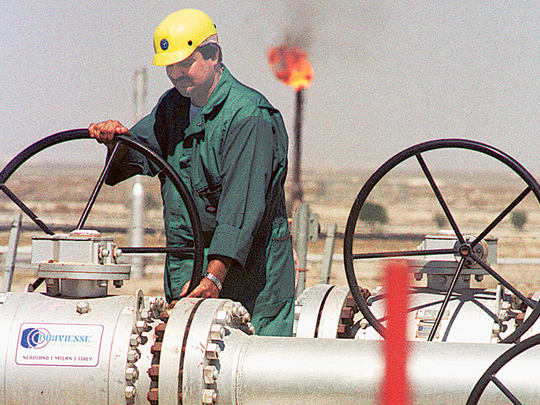
Oil prices are now in recovery mode and approaching $55, which would be a highly a sought after level for OPEC countries after the steep decline last year.
Many factors have combined to make this possible. The Swiss banking giant UBS predicts prices could rise to $63 a barrel by the middle of the year, and it seems to be a projection based on convincing justifications. It is customary that oil demand begins to grow by the third quarter of each year, with Goldman Sachs reckoning $65 is doable by summer.
As for the justifications for the increases, it can be summed up in three reasons. First, optimism about the rise in oil demand after the rapid circulation of various COVID-19 vaccines, which will lead to the gradual return of activities in all countries. Britain has announced that the current shutdown would be the last of such closures.
Second, the US Congress’ confirmation of Joe Biden’s victory has also contributed, due to energy-related policies the new US president intends to take.
Sticking to promises
The third factor is related to the renewed commitment by the OPEC+ grouping to the production ceiling agreed upon, with a slight increase by an estimated 75,000 barrels per day by Russia and Kazakhstan. Meanwhile, Saudi Arabia’s decision to voluntarily reduce its output by one million barrels per day contributed significantly to the price increase in such a short period of time.
Oil reserves have also dropped as a result of US oil production’s decline to a 450,000 barrel a day, as confirmed by the International Energy Agency (IEA). In its report last month, the IEA said there is a deficit in global oil reserves, which is expected to increase by July and leading to a further rise in prices.
Iranian output
Certainly, there are some expectations about easing sanctions on Iranian oil exports by the US President-elect. But it will take some time, both in terms of easing sanctions or rehabilitating the Iranian oil sector itself.
This will coincide with a faster-than-expected rise in demand in the third quarter, which will lead to markets’ absorption of the Iranian production. There are obstacles related to the payment of Iranian oil sales due to financial sanctions imposed on Tehran, which may constitute another obstacle to the rapid flow of the country’s oil exports.
Favourable outcomes
All these will reflect positively on the economies of oil producing countries. Russia’s Oil Minister Alexander Novak believes that $45-$55 per barrel is suitable for his country. This rate may also be the case for other countries. And yet, the expectations that this rate will be exceeded will lead to a major breakthrough in economic situations for the Gulf countries after suffering for more than a year.
It will contribute to reducing their budget deficits, especially since most of these budgets were based on a conservative oil pricing of $45. These developments will encourage increased spending, including reviewing some projects that had been frozen due to the crisis and the removal of some austerity measures. This means the possible recovery for all sectors.
However, this does not necessarily mean the need to minimise the importance of approaches taken to diversify sources of income. It is necessary that oil’s latest gains provide an additional impetus to move faster to achieve this strategic goal.
- Mohammed Al Asoomi is a specialist in energy and Gulf economic affairs.








